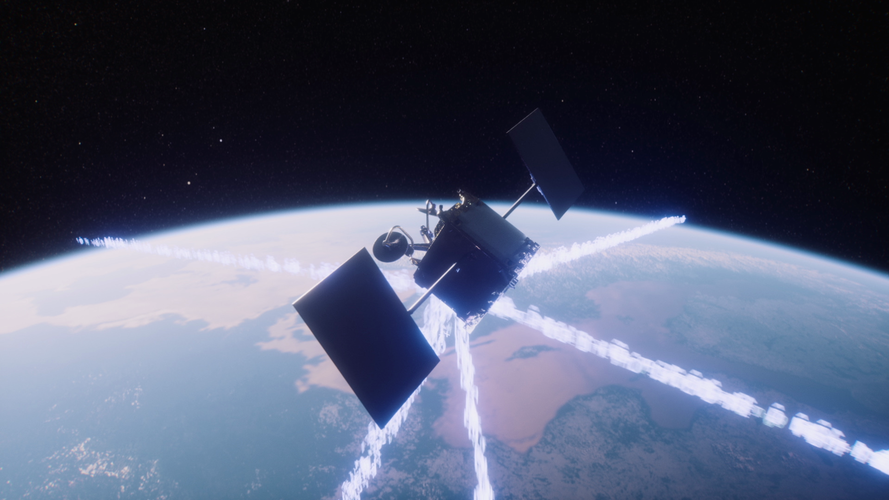Lockheed Martin teams with Iceye to advance AI-enabled targeting
Wednesday, 20 November 2024 21:26

NASA ocean world explorers have to swim before they can fly
Wednesday, 20 November 2024 20:08This request seems a bit unusual, so we need to confirm that you're human. Please press and hold the button until it turns completely green. Thank you for your cooperation!
Press and hold the button
If you believe this is an error, please contact our support team.
185.132.36.159 : 40e6f97b-655f-49bf-bd61-13f9941b
Lockheed Martin’s new mid-size satellite platform closer to launch
Wednesday, 20 November 2024 19:56

Canada's first moon rover will soon have a name as it prepares to explore a hostile lunar region
Wednesday, 20 November 2024 17:40This request seems a bit unusual, so we need to confirm that you're human. Please press and hold the button until it turns completely green. Thank you for your cooperation!
Press and hold the button
If you believe this is an error, please contact our support team.
185.132.36.159 : 1194a4ef-eaaa-4a8f-97b7-ded9e9be
China performs fairing separation test for crewed moon mission rocket
Wednesday, 20 November 2024 16:39
From Houston to the moon: Johnson's thermal vacuum chamber tests lunar solar technology
Wednesday, 20 November 2024 14:59This request seems a bit unusual, so we need to confirm that you're human. Please press and hold the button until it turns completely green. Thank you for your cooperation!
Press and hold the button
If you believe this is an error, please contact our support team.
185.132.36.159 : 45fe0344-bcee-46a8-92e3-bacb2af9
Destination Earth awarded
Wednesday, 20 November 2024 13:32
Destination Earth awarded
DestinE receives honours in HPCwire Readers’ and Editors’ Choice Awards
Exolaunch to deploy satellites with new universal adapter in 2026
Wednesday, 20 November 2024 12:09

Fly around Ares Vallis on Mars
Wednesday, 20 November 2024 12:00 Video:
00:04:30
Video:
00:04:30
Explore the immense power of water as ESA’s Mars Express takes us on a flight over curving channels, streamlined islands and muddled ‘chaotic terrain’ on Mars, soaking up rover landing sites along the way.
This beautiful flight around the Oxia Palus region of Mars covers a total area of approximately 890 000 km², more than twice the size of Germany. Central to the tour is one of Mars’s largest outflow channels, Ares Vallis. It stretches for more than 1700 km and cascades down from the planet’s southern highlands to enter the lower-lying plains of Chryse Planitia.
Billions of
5G satellites for sustainable agriculture and disaster relief
Wednesday, 20 November 2024 09:59
ESA is working on 5G-HOSTS-SAT to demonstrate how 5G satellite and terrestrial communication networks can work together to solve real-world challenges. The project focuses on two critical areas: smart agriculture and emergency response.
Latitude signs multi-launch contract with Atmos Space Cargo
Wednesday, 20 November 2024 09:28

New full Sun views show sunspots, fields and restless plasma
Wednesday, 20 November 2024 09:00
Zoom into Solar Orbiter's four new Sun images, assembled from high-resolution observations by the spacecraft's PHI and EUI instruments made on 22 March 2023. The PHI images are the highest-resolution full views of the Sun's visible surface to date, including maps of the Sun's messy magnetic field and movement on the surface. These can be compared to the new EUI image, which reveals the Sun's glowing outer atmosphere, or corona.
ESA’s Space Systems for Safety and Security (4S) programme
Wednesday, 20 November 2024 08:50 Video:
00:02:18
Video:
00:02:18
At ESA, through the Advanced Research in Telecommunications Systems programme, we’re addressing solutions for when safety and security of communication services cannot be guaranteed by the terrestrial networks alone. With our programme Space systems for Safety and Security, or 4S, we are pioneering cutting-edge development of secure and resilient satellite communication systems, technologies and services to improve life on Earth.
Picture a world where our critical infrastructure is protected from cyber threats, and where communication links work when the world around them doesn't. A transportation network where safety is not just a priority, but a guarantee. Where air traffic flows




